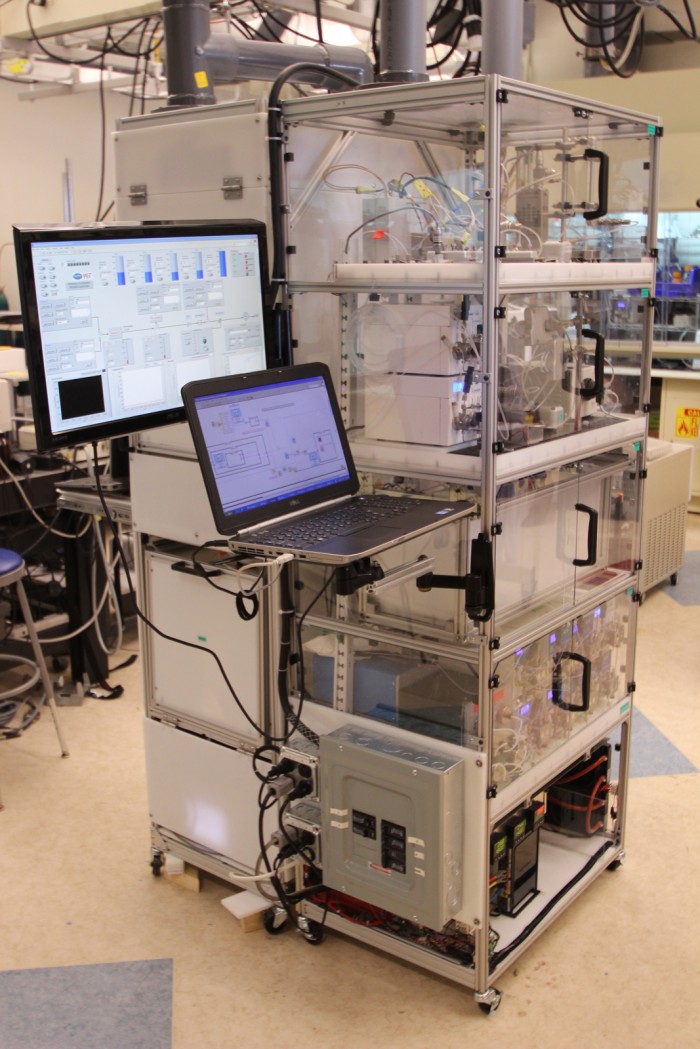MIT researchers have developed a compact, portable pharmaceutical manufacturing system that can be reconfigured to produce a variety of drugs on demand. Just as an emergency generator supplies electricity to handle a power outage, this system could be rapidly deployed to produce drugs needed to handle an unexpected disease outbreak, or to prevent a drug shortage caused by a manufacturing plant shutdown.
“Think of this as the emergency backup for pharmaceutical manufacturing,” says Allan Myerson, professor of the practice of chemical engineering and a project leader. “The purpose is not to replace traditional manufacturing; it’s to provide an alternative for these special situations.”
Manufacturing drugs with batch processing, the traditional method, can take weeks or months. Active ingredients are synthesized in chemical manufacturing plants and then shipped to other sites to be converted into a form that can be given to patients, such as tablets, drug solutions, or suspensions. This system offers little flexibility to respond to surges in demand and is susceptible to severe disruption if one of the plants has to shut down.

The MIT team built a system that can produce four drugs formulated as solutions or suspensions: Benadryl, lidocaine, Valium, and Prozac. Using this apparatus, the researchers can manufacture about 1,000 doses of a given drug in 24 hours.
Key to the continuous system are new chemical reactions that can occur as the reactants flow through relatively small tubes, much smaller than the huge vats in which most pharmaceutical reactions now take place. Batch processing is limited by the difficulty of cooling these vats, but with the flow system, reactions producing a great deal of heat can run safely.
Many of the compounds the researchers produced had never been synthesized in a continuous flow platform, says Timothy Jamison, the head of MIT’s Department of Chemistry and one of the project leaders. “That presents a lot of challenges even if there is a good precedent from the batch perspective,” he says.
By swapping in different components, the researchers can easily reconfigure the system to produce different drugs. “Within a few hours we could change from one compound to the other,” says chemical engineering professor Klavs Jensen, another of the project leaders.
This type of system could be especially useful in regions with few pharmaceutical storage facilities, because drugs can be produced on demand, eliminating the need for long-term storage.
“The dosages don’t have to have long-term stability,” Myerson says. “People line up, you make it, and they take it.”
Keep Reading
Most Popular
Large language models can do jaw-dropping things. But nobody knows exactly why.
And that's a problem. Figuring it out is one of the biggest scientific puzzles of our time and a crucial step towards controlling more powerful future models.
How scientists traced a mysterious covid case back to six toilets
When wastewater surveillance turns into a hunt for a single infected individual, the ethics get tricky.
The problem with plug-in hybrids? Their drivers.
Plug-in hybrids are often sold as a transition to EVs, but new data from Europe shows we’re still underestimating the emissions they produce.
Stay connected
Get the latest updates from
MIT Technology Review
Discover special offers, top stories, upcoming events, and more.